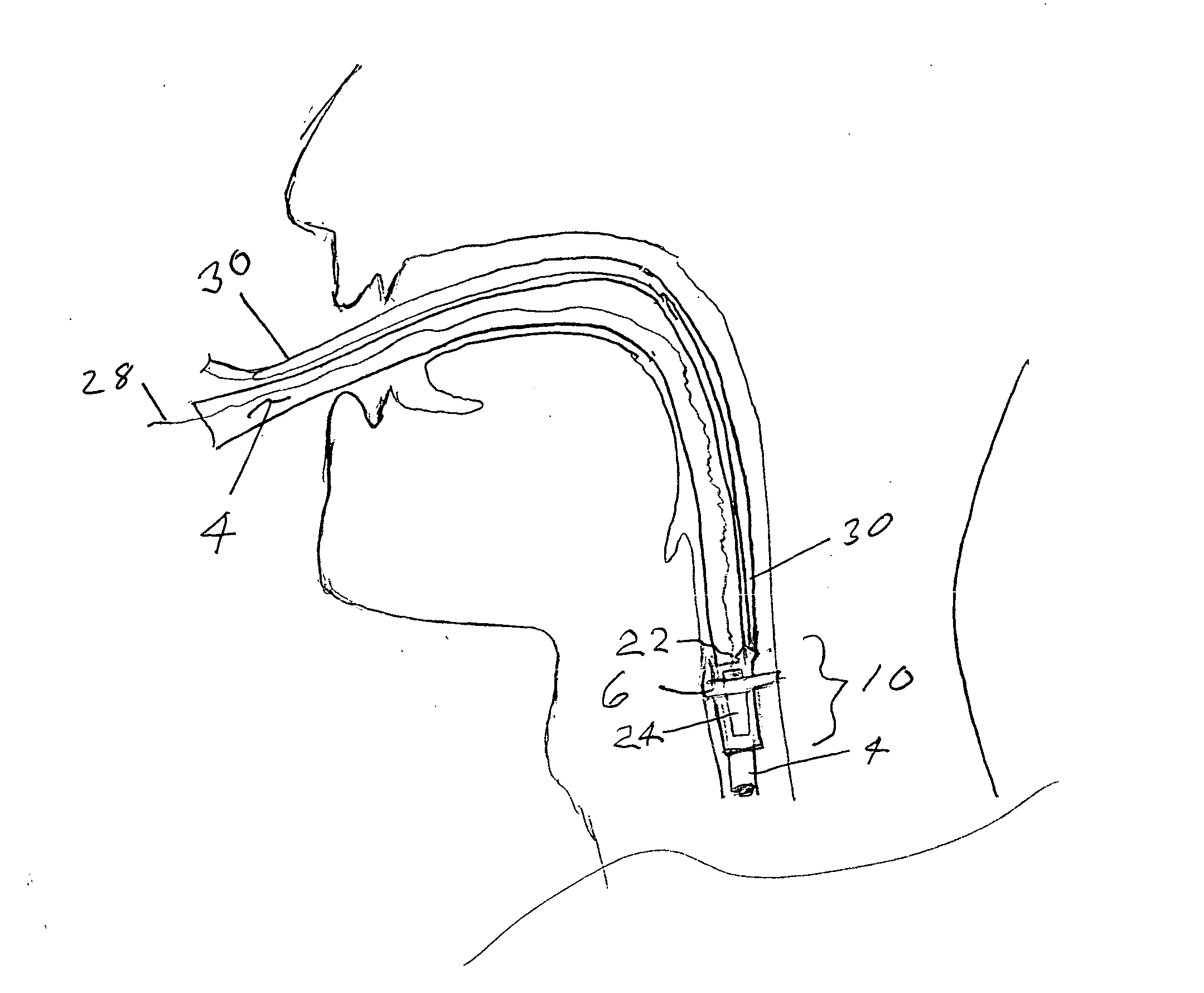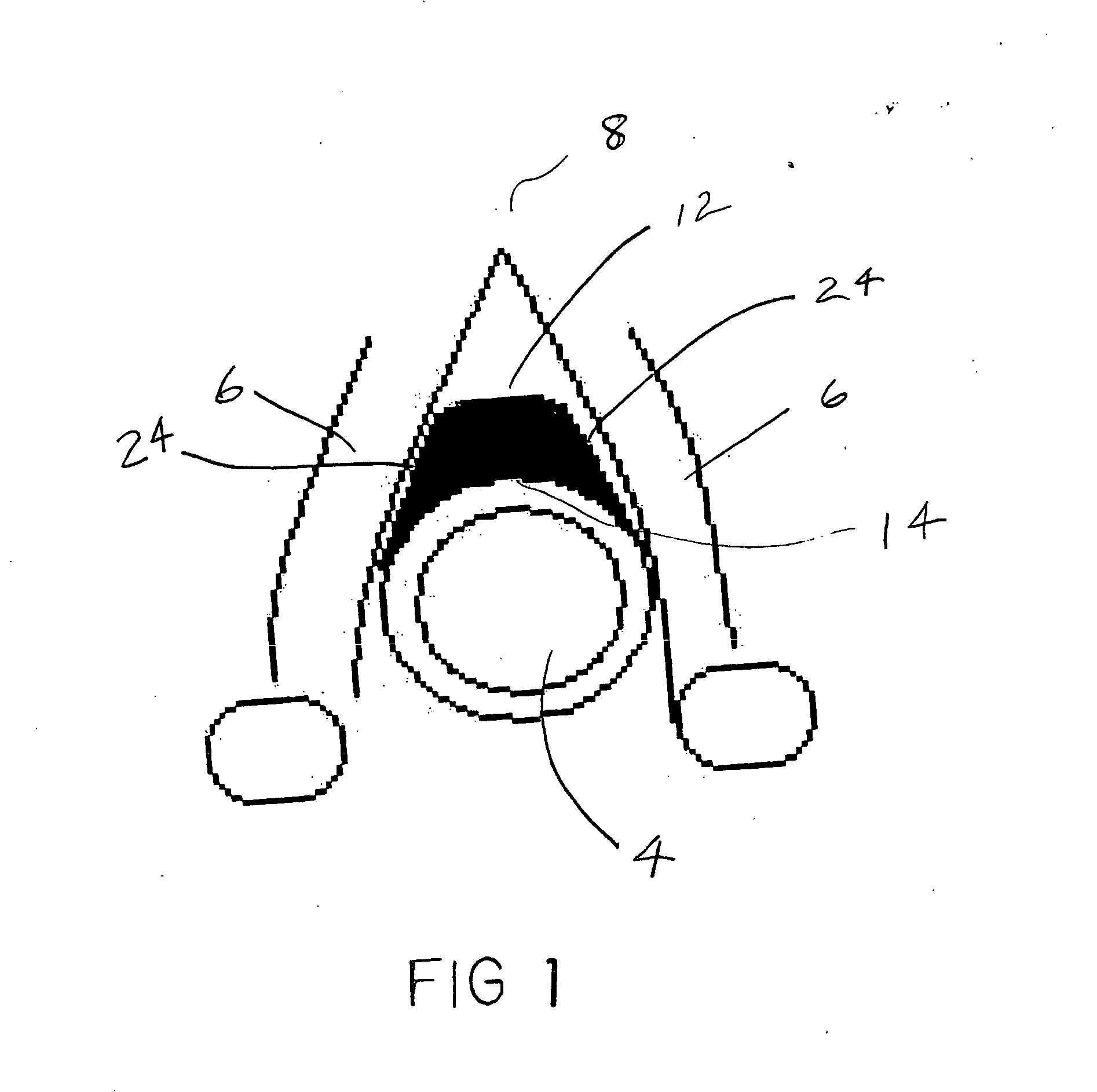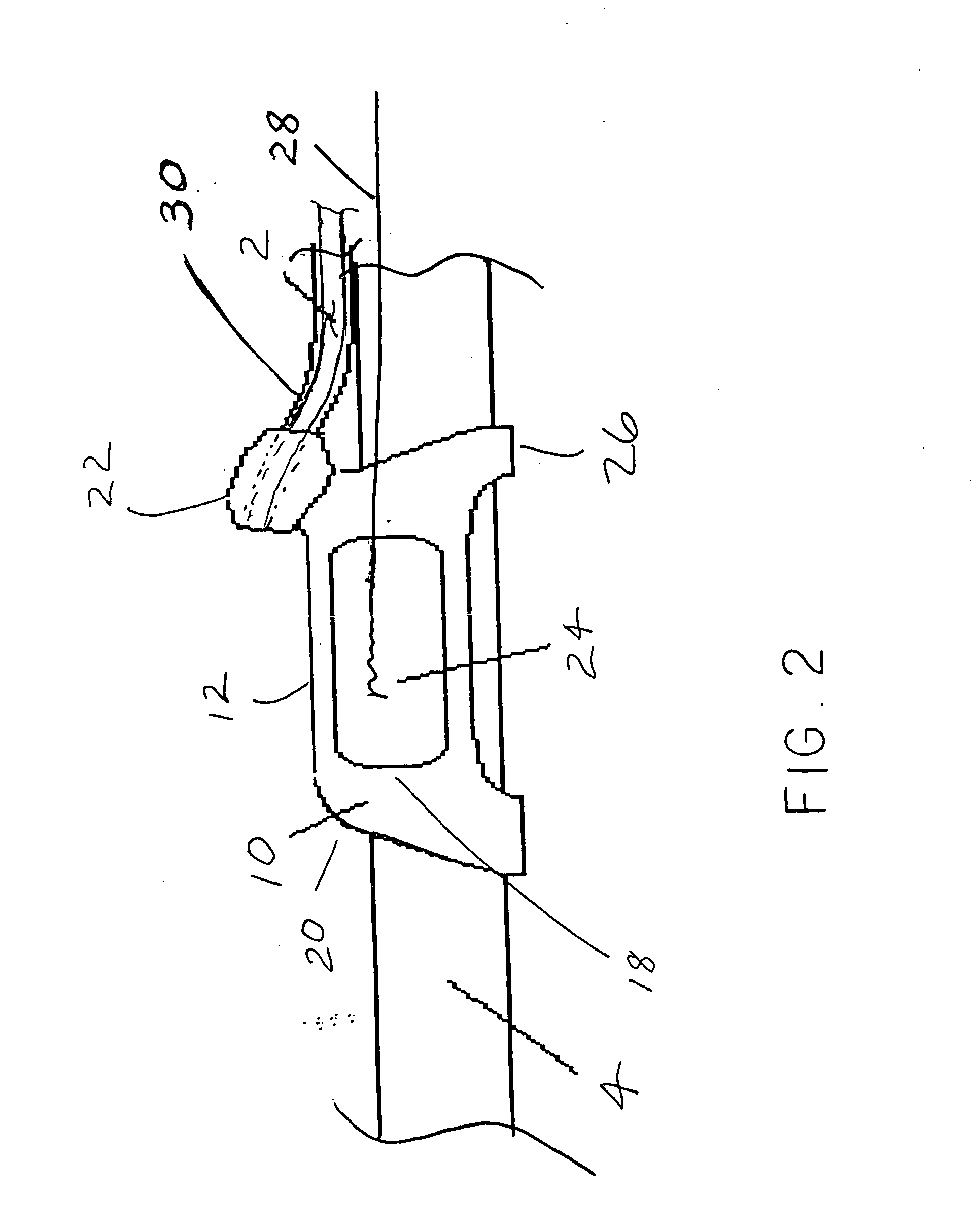Endotracheal electrode and optical positioning device
a technology of optical positioning and trachea, which is applied in the direction of respirator, diagnostic recording/measuring, application, etc., can solve the problems of hematoma, constant risk of abscess or hematoma of the larynx, and method that requires considerable skill and skill, and the possibility of hematoma
- Summary
- Abstract
- Description
- Claims
- Application Information
AI Technical Summary
Benefits of technology
Problems solved by technology
Method used
Image
Examples
Embodiment Construction
[0028] Referring now to the drawings, there is shown the preferred embodiment of the endotracheal electrode and optical positioning device 10 of this invention for carrying and positioning laryngeal surface electrode(s) 24 and for receiving a fiber optic video device 2 for continuous monitoring of the larynx. The preferred embodiment and the best mode contemplated of the endotracheal electrode and optical positioning device 10 of the present invention are herein described. However, it should be understood that the best mode for carrying out the invention hereinafter described is offered by way of illustration and not by the way of limitation. It is intended that the scope of the invention include all modifications that incorporate its principal design features.
[0029] The endotracheal electrode and optical positioning device 10 of this invention is inserted into the glottic chink between the human true vocal cords 6, as shown on FIGS. 1 and 4. It provides a platform for a laryngeal ...
PUM
 Login to View More
Login to View More Abstract
Description
Claims
Application Information
 Login to View More
Login to View More - R&D
- Intellectual Property
- Life Sciences
- Materials
- Tech Scout
- Unparalleled Data Quality
- Higher Quality Content
- 60% Fewer Hallucinations
Browse by: Latest US Patents, China's latest patents, Technical Efficacy Thesaurus, Application Domain, Technology Topic, Popular Technical Reports.
© 2025 PatSnap. All rights reserved.Legal|Privacy policy|Modern Slavery Act Transparency Statement|Sitemap|About US| Contact US: help@patsnap.com



